Designed in 1920 by Jules de Thier and Henri Langlois Van Ophem, the original triangle-shaped course used public roads between the Belgian towns of Francorchamps, Malmedy, and Stavelot. The track was intended to have hosted its inaugural race in August 1921, however this event had to be cancelled as there was only one entrant. The first car race was held at the circuit in 1922, and two years later saw the first running of the now famous 24 Hours of Francorchamps race. The circuit was first used for Grand Prix racing in 1925.
The old Spa circuit was essentially a speed course with drivers managing higher average speeds than on other race tracks.[citation needed] Back then, the Belgians took pride in having a very fast circuit, and to improve average speeds, in 1939 the former slow uphill U-turn at the bottom of the Eau Rouge creek valley, called the Ancienne Douane (until 1920, there was a German Empire customs office here), was cut short with a faster sweep straight up the hill, called the Raidillon. Until 2000[citation needed], it was possible to travel over the race track when it was still a public road. At Eau Rouge, southbound traffic was allowed to use the famous uphill corner, while the opposite downhill traffic had to use the old road and U-turn behind the grand stands, rejoining the race track at the bottom of Eau Rouge.
The old race track continued through the now-straightened Kemmel curves to the highest part of the track (104 metres above the lowest part), then went downhill into Les Combes, a fast, slightly banked downhill left-hander towards Burnenville, passing this village in a fast right hand sweep. Near Malmedy, the Masta straight began, which was only interrupted by the fast Masta Kink between farm houses before arriving at the town of Stavelot. Then the track blasted through an uphill straight section with a few kinks called La Carriere, going through 2 ultra-fast turns (an unnamed right-hand turn and then Blanchimont) before braking very hard for the La Source hairpin, and that rejoined the downhill start finish section as opposed to today where the start-finish section is before La Source.
The quicker 14 km track layoutSpa is located in the Belgian Ardennes countryside, and the old circuit was (and still is) used as everyday public road, and there were houses, trees, electric poles, barnyards, fields and other obstacles located right next to the track. Before 1970, there were no safety modifications of any kind done to the circuit and the conditions of the circuit were, aside from a few straw bales, virtually identical to everyday civilian use. Former Formula One racing driver and team owner Jackie Oliver was quoted as saying "if you went off the road, you didn't know what you were going to hit".
Spa was the fastest road circuit in Europe at the time, and it had a nasty reputation for being dangerous and very fast- it was a circuit known to be one for the brave, and most drivers were frightened of it. The old Spa circuit was unique in that speeds were consistently high with hardly any let-up at all for 34 minutes . This made it an extraordinarily difficult mental challenge, because most of the corners were taken at 180+ mph and were not quite flat- every corner was as important as the one before it. If a driver lifted just that little bit more, then whole seconds, not tenths- would be lost. Even the slightest error of any kind was punished very harshly in more ways than one. But this reality also worked inversely- huge advantages could be gained if a driver came out of a corner slightly faster.
Like the Nurburgring and Le Mans circuits, Spa became notorious for fatal accidents, as there were many deaths each year at the ultra-fast track, especially at the 1960 Belgian Grand Prix where 2 drivers, Chris Bristow and Alan Stacey were both killed within 15 minutes (although Stacey's accident was caused by a bird hitting him in the face) and Stirling Moss had crashed at Burnenville during practice and was severely injured . When Armco crash barriers were added to the track in 1970, deaths became less frequent there but the track was still notorious for other factors. The Ardennes Forest had very unpredictable weather and there were parts where it was raining and the track was wet, and other parts where the sun was shining and the track was completely dry. This factor was a commonality on long circuits, but the weather at Spa was always more unpredictable than other long circuits, combined with the fact that it was an ultra-high speed track with all but 1 corner (La Source) being extremely high speed made it one of, if not the most dangerous race track in the world. Multiple fatalities during the 1973 and 1975 24 Hours of Spa touring car races more or less sealed the old circuit's fate, and by 1978, the last year Spa was in its original form, the only major races held there were the Belgian motorcycle Grand Prix and the Spa 24 Hours touring car race; the 1000 km World Sportscar Championship race no longer took place after 1975 and did not come back until 1982.
In 1969, the Belgian Grand Prix was boycotted by F1 because of the extreme danger of Spa. There had been 10 racing fatalities in total at the track in the 1960s, including 5 in the 2 years previous. The drivers demanded changes made to Spa which were not possible on short notice, so the Belgian Grand Prix was dropped that year. Armco was added to the track and sections of it were improved (especially the Stavelot and Holowell sections), just like Armco had been added for the 1969 Le Mans race. One last race there the following year on the improved track was still not satisfactory enough (even after a temporary chicane was added at Malmedy just for that race) for the drivers in terms of safety, and even with the chicane, the drivers averaged 150+ mph (240 km/h) during the race. For the 1971 race, the track owners and authorities had not brought the track up to date with mandatory safety measures, and the race was cancelled. Formula One would not return to Spa until 1983 on the modern track.
The Masta Kink was one of the most fearsome sections on any race track in the world, requiring skill and bravery in equal measure to get it right. After a long run from Malmedy, the cars would reach top speed before having to negotiate Masta, a high speed left-right chicane, and a good exit speed was vital as it was followed by another long straight run to Stavelot. This was a very fast and very dangerous corner because it was situated right in the middle of two very long unbroken straights both about 2.4km long. The speed in this sector could reach 190 mph.
Masta was lost to F1 racing after the 1970 race. Jackie Stewart's crusade to improve safety in racing was set in motion by his crash there in 1966, when his BRM ended upside-down in the cellar of the farmhouse on the outside of the corner, with fuel gushing out of the tank onto Stewart, who had broken ribs to add to his misery. At this point, many of the Formula One drivers disliked Spa (including Stewart and Jim Clark, who had some of his greatest wins there) because of the immense speeds that were constant on the track. While he was spectating at the 1972 12 Hours of Sebring, Stewart attempted to organise a boycott of the Spa 1000 km race that year, a move that was not respected by many of the drivers, because Spa was still popular with racing drivers outside of Formula One. Stewart later compared the old Spa circuit in 1986 as being as ferocious as a tiger, and he later described Masta in an interview in 2011 as perhaps the hardest corner on any racetrack he raced on in his career; even more so than Eau Rouge.
Another particularly gruesome story comes from the 1972 24-hour touring car race. During one of his pitstops at night, Hans-Joachim Stuck shouted to his co-driver Jochen Mass over the noise that he should "look out for body parts at the Masta Kink". Mass arrived there expecting to see bits of car all over the road but was appalled to discover it was in fact the remains of a marshal.
After Masta, and at the end of the subsequent Holowell Straight, there used to be a sharp hairpin at the entrance to the town itself, which was later bypassed by a quicker, banked right hand corner. Another fast section of road in the forest leads to Blanchimont. Here, the new short Grand Prix track of 1979 joins the old layout.
Eighteen Formula One World Championship Grands Prix were run on the info-SPA-Francorchamps circuit's original configuration, which was boycotted by F1 in 1969,[10] before the revised circuit banished it to the history books in 1979. The lap record of the old triangle-shaped track is 3 minutes and 13.4 seconds, held by the French driver Henri Pescarolo, driving a Matra at the 1973 Spa 1000 km World Sportscar Championship race at an average speed of 262 kilometres per hour (163 mph), but the fastest ever recorded time of the old Spa circuit was the pole position time for the very same race 3 minutes and 12.7 seconds by Jacky Ickx in a Ferrari 312PB.
Over the years, the Spa course has been modified several times. The track was originally 15 kilometres (9 mi) long, but after World War II, the track had some changes. In 1930 the chicane at Malmedy was eliminated and bypassed, making the course even faster, but the chicane was re-installed in 1935, albeit slightly different. In 1939, "Virage de Ancienne Douane" was eliminated and cut short, thus giving birth to the Eau Rouge /Raidillon uphill sweeping corner. In 1947, the chicane at Malmedy was again eliminated and bypassed, and was made part of the Masta Straight. The slight right-hander that was originally Holowell (the corner before Stavelot after the second Masta Straight) was eliminated. And finally, instead of going through a slight left-hander that went into the town of Stavelot and a sharp right-hander at a road junction in Stavelot, a shortcut was built that became a very fast, very wide right-handed turn that bypassed Stavelot.
All these changes made the final configuration of the old Spa circuit 14 km (9 mi) long. All these changes made Spa the fastest open road circuit in the world, and in the final years of the old circuit, drivers could average 150 mph (241 km/h) on the circuit. The biggest change, however, saw the circuit being shortened from 14 km (9 mi) to 7 km (4 mi) in 1979. The start/finish line, which was originally on the downhill straight before Eau Rouge, was moved to the straight before the La Source hairpin in 1981. Like its predecessor the new layout still is a fast and hilly route through the Ardennes where speeds in excess of 330 km/h (205 mph) can be reached. Since inception, the place has been famous for its unpredictable weather. Frequently drivers are confronted with one part of the course being clear and bright while another stretch is rainy and slippery.
The circuit probably demonstrates the importance of driver skill more than any other in the world. This is largely due to the Eau Rouge and Blanchimont corners, both which need to be taken flat out to achieve a fast run onto the straights after them, which aids a driver in both a fast lap and in overtaking.

 The Raidillon
The Raidillon
The most famous part of the circuit is the Eau Rouge / Raidillon combination. Having negotiated the La Source hairpin, drivers race down a straight to the point where the track crosses the Eau Rouge stream for the first time, before being launched steeply uphill into a sweeping left-right-left collection of corners with a blind summit. Properly speaking, the Eau Rouge corner is only the left-hander at the bottom. The following right-hander that leads steeply uphill, which was introduced in 1939 to shortcut the original hairpin "Ancienne Douane", is called "Raidillon". The corner requires an amount of skill from the driver to negotiate it well and the long straight ahead produces good overtaking opportunities for drivers at the following "Les Combes" corner. The corner was tighter and narrower (it was made wider in 1970, when the circuit was updated) on the old circuit than it is today. It is now faster.
The 2005 and 2006 F1 World Champion Fernando Alonso explained: "You come into the corner downhill, have a sudden change [of direction] at the bottom and then go very steep uphill. From the cockpit, you cannot see the exit and as you come over the crest, you don't know where you will land. It is a crucial corner for the timed lap, and also in the race, because you have a long uphill straight afterwards where you can lose a lot of time if you make a mistake. But it is also an important corner for the driver's feeling. It makes a special impression every lap, because you also have a compression in your body as you go through the bottom of the corner. It is very strange but good fun as well."
The challenge for drivers has always been to take Eau Rouge-Raidillon flat out. Regular touring cars can take the corner at 160-180 km/h, Formula One at over 300 km/h. This is due to the huge amount of downforce on the cars. World Champion Jacques Villeneuve once spoke of the effects of downforce saying that to get through the corner they have to go faster as the faster the car is going the more downward force there is. Without lifting the throttle for Eau Rouge, a car would be flat out from La Source, along the Kemmel straight to Les Combes, a total distance of 2.015 km.
Still, a loss of control in this section often leads to very heavy shunt as usually the rear-end of the car is lost and the impact is most of the times lateral. Eau Rouge has claimed several victims over the years, including Stefan Bellof in a Porsche sportscar, Guy Renard during the 24h of info-SPA-Francorchamps in 1990 in a Toyota Corolla GT and also caused Alex Zanardi's in 1993 and Jacques Villeneuve's spectacular off in qualifying in 1999, which he described as "My best-ever crash", followed by his teammate Ricardo Zonta's similar accident, leading cartoonist Jim Bamber to show BAR boss Craig Pollock telling Zonta: "Jacques is the quickest through Eau Rouge, so go out there and do exactly what Jacques does"
Following the deaths of Roland Ratzenberger and Ayrton Senna at Imola in 1994, the following F1 races saw the introduction of chicanes made up from stacked tyres. The entry to Eau Rouge was obstructed in such a way in 1994, although it was returned to its previous glory the following year. The corner was slightly modified for 2002, but still retains its character.
Testimony to the fame and beloved character of the Eau Rouge corner can be found in fan reaction to the Istanbul Park circuit in Istanbul, Turkey. When fans first got to see the course configuration at the start of the weekend of the 2005 Turkish Grand Prix, they noted that an uphill kink on the back straight was very similar to Eau Rouge; the kink was therefore jokingly dubbed "Faux Rouge" (a pun on the name of the original Spa corner using the French word "faux", meaning "false").
The Blanchimont high-speed left-hand turn, present in both the old 14 km circuit and the new, shorter, 7 km track, is the final sweeping corner of the track before the chicane, which leads to the pit straight.
This turn and the approach to it have caused serious accidents over time, the most recent being in 2001, when Luciano Burti lost the front wing of his Prost due to a clash with Eddie Irvine's Jaguar, losing front downforce and steering, leaving the track at 185 mph (298 km/h) and piling into the tyre wall, the impact knocking him out and burying the car into a mound of tyres. Problems have also occurred in lower classes of racing with Tom Kristensen having a very violent crash in a Formula 3000 car in 1997 after running wide on the entry to the Blanchimont turn and subsequently hitting the wall effectively throwing the monocoque back out in the middle of the track, where it was hit by numerous cars before coming to a complete halt.
The run-off area is narrower than in other turns taken at this speed, and behind the protective barriers there is a 7-8 meter drop. This is the first turn taken by the cars after the new track rejoins the route of the old 14 km track. Blanchimont was also the scene where in 1992 after erik Comas had crashed heavily during Friday's session, Ayrton Senna stopped, disembarked his car and sprinted to help the injured driver, with other cars driving past at racing speeds.
Due to the introduction of a new legislative order in Europe, new[when?] bans in tobacco advertising have been imposed, and as a special case, Formula One is facing a major threat regarding this point. Due to these political and legislative circumstances, Grand Prix in this circuit was left out of the 2003 calendar as a response to the internal tobacco legislation in Belgium. The event was tagged as a World Class event within the national senate, and thus it was saved for the 2004 Formula One season. The section known as the Bus Stop chicane was reprofiled for 2004 with an additional sweep to the right.
Spa was dropped from the Formula One calendar in 2006. The organiser of the event went bankrupt in late 2005, and therefore the planned improvements to the race track and paddock had not yet been made. The Wallonia government stepped in and provided the necessary funds, but too late for the 2006 race to take place.
From 2007 tobacco advertising bans limited the number of sponsors from the industry finding the sport appealing. From 2010, only the Scuderia Ferrari Marlboro still had tobacco branding; soon after that the team dropped the Marlboro "stripes" from their race cars after accusations of it being linked to subliminal advertising.
With a new financial backer, the renovation started on 6 November 2006 and finished in May 2007, costing around 19 million.
Formula 1 returned to Spa for 2007, with a modified track layout. The Bus Stop chicane was moved back towards Blanchimont and the La Source hairpin moved forward. This allowed more space for the new pit lane. The modifications gave a longer start/finish straight.
New asphalt runoff was added to the inside and outside of Les Combes for the 2010 race, in line with the prevailing trends at other Formula One circuits.
Prior to the 2013 race, drainage grooves were cut into the asphalt on the start-finish straight, underneath the first 11 grid slots. Drivers were initially concerned that this would affect grip at the start.
Besides Formula 1 other races in different motorsports classes are hosted at info-SPA-Francorchamps. The most notable ones are the Blancpain Endurance Series, the Formula 3, the RCN, the Motorbike Endurance, the ADAC GT Masters, and previously the DTM and the WTCC. The most famous long-distance and sports car races are the Spa 24 Hours and the 1000 km Spa. The circuit also hosts a 24-hour 2CV race.
As the long-time home of the Belgian Grand Prix and its location within the Ardennes forests it has been a popular backdrop for all kinds of fictional media, from appearances in comics and multiple motion pictures,[18] to regular appearances in dozens of video games across almost all formats going back into the 1980s.
Information courtesy wikipedia
Further InformationPICTURE: Origin - EmpireRV, Photographer: Unknown
Wikipedia
Wikipedia Spa24
Racing Circuit Info
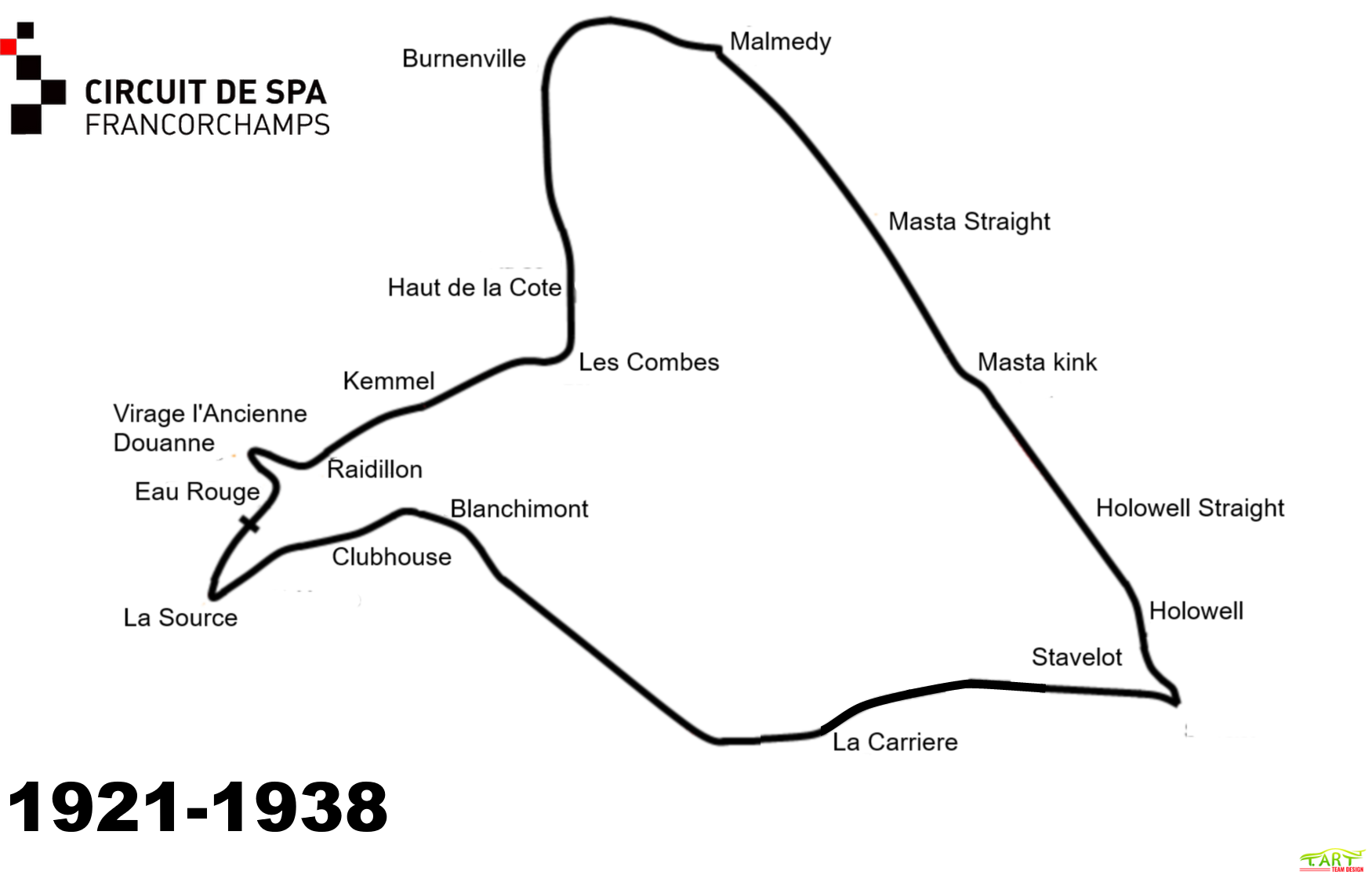
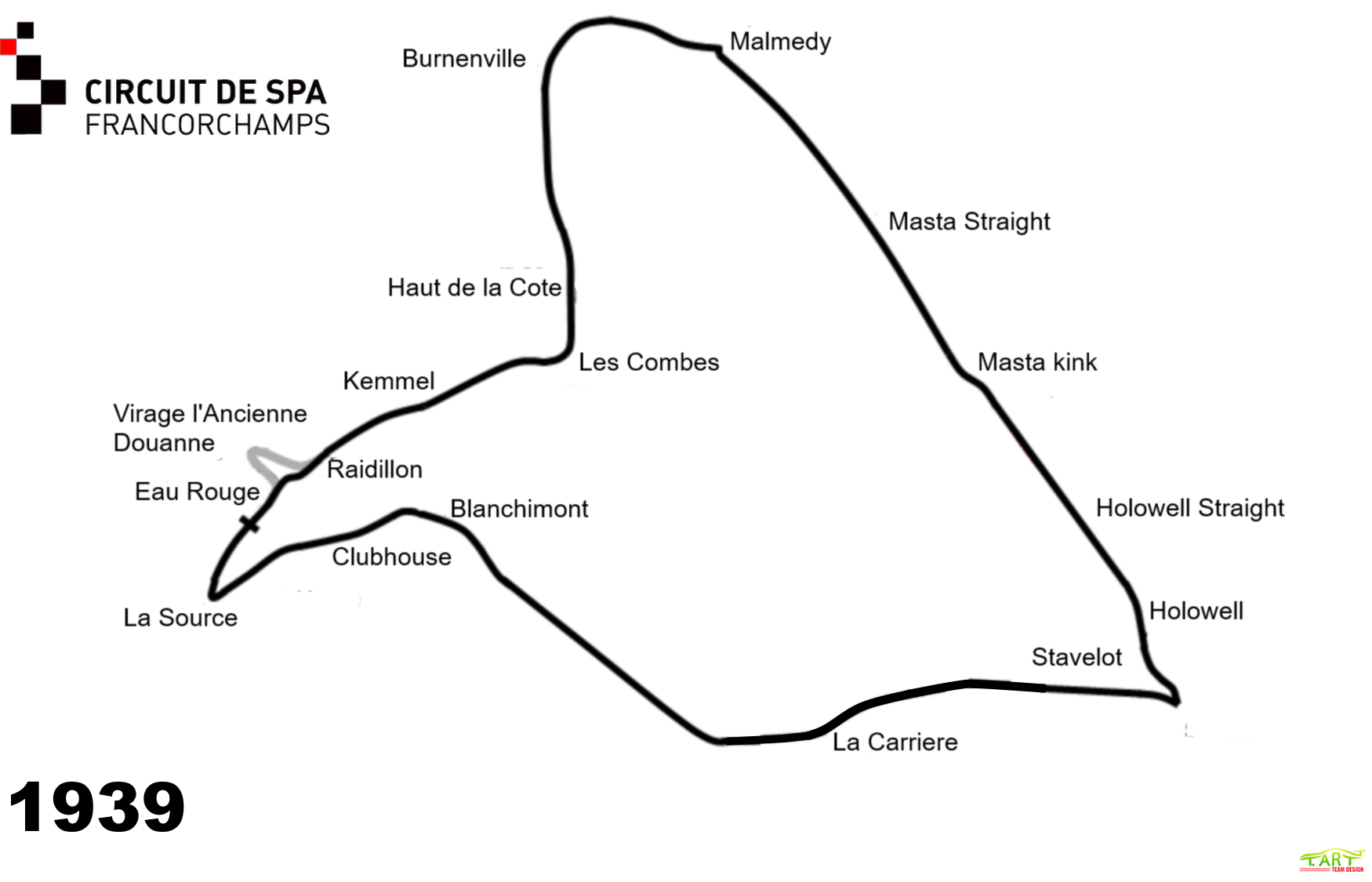
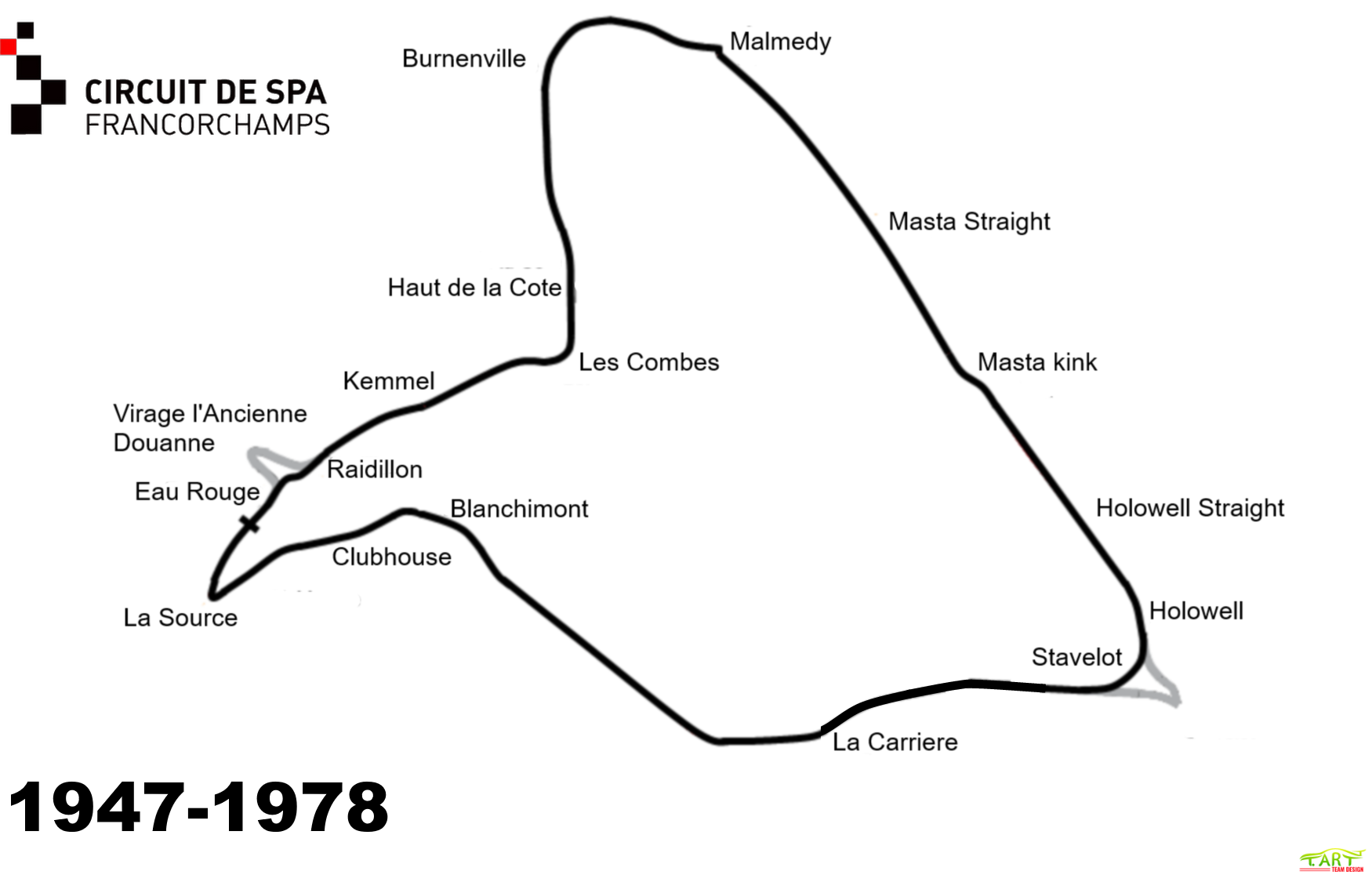
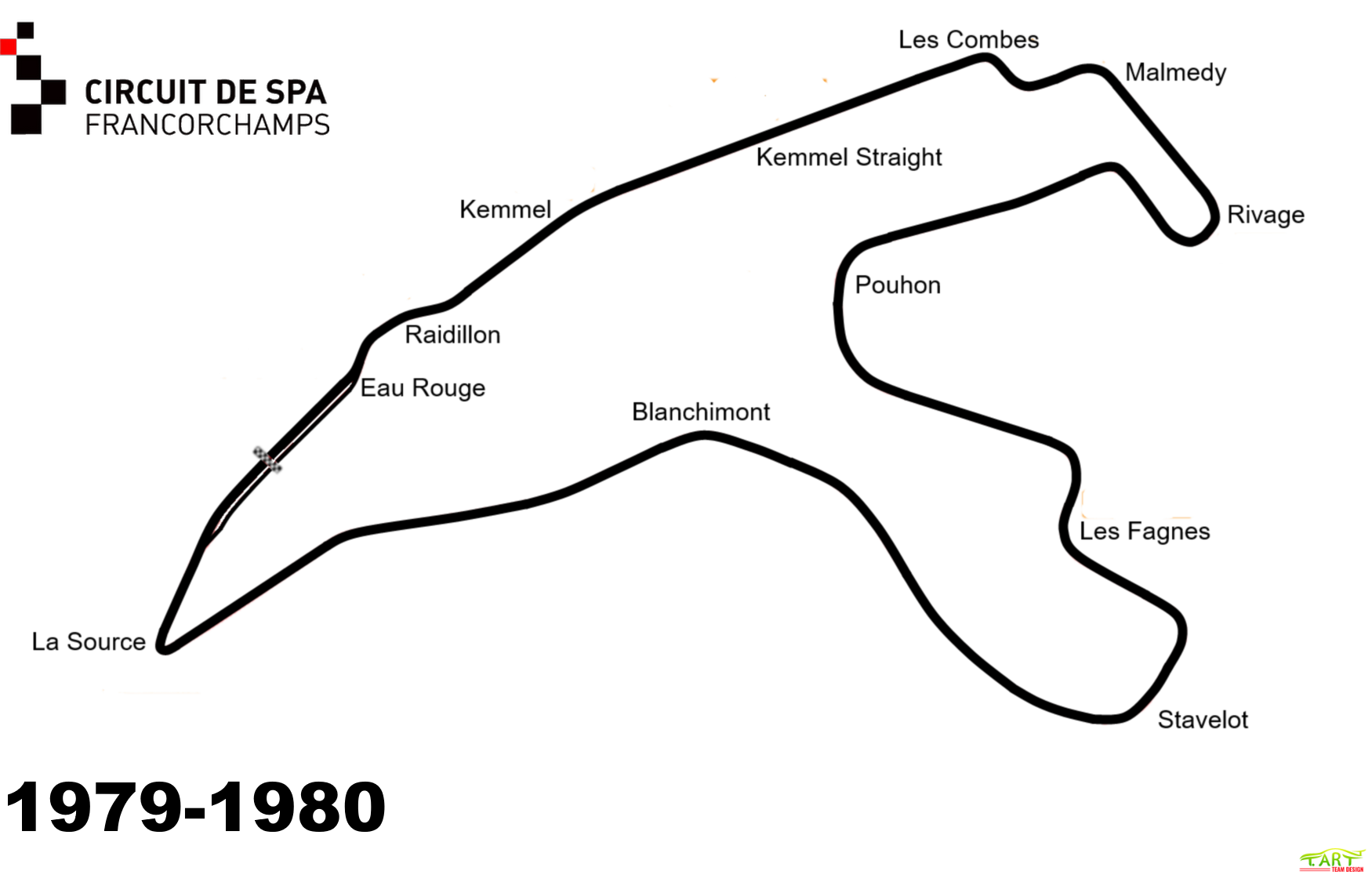
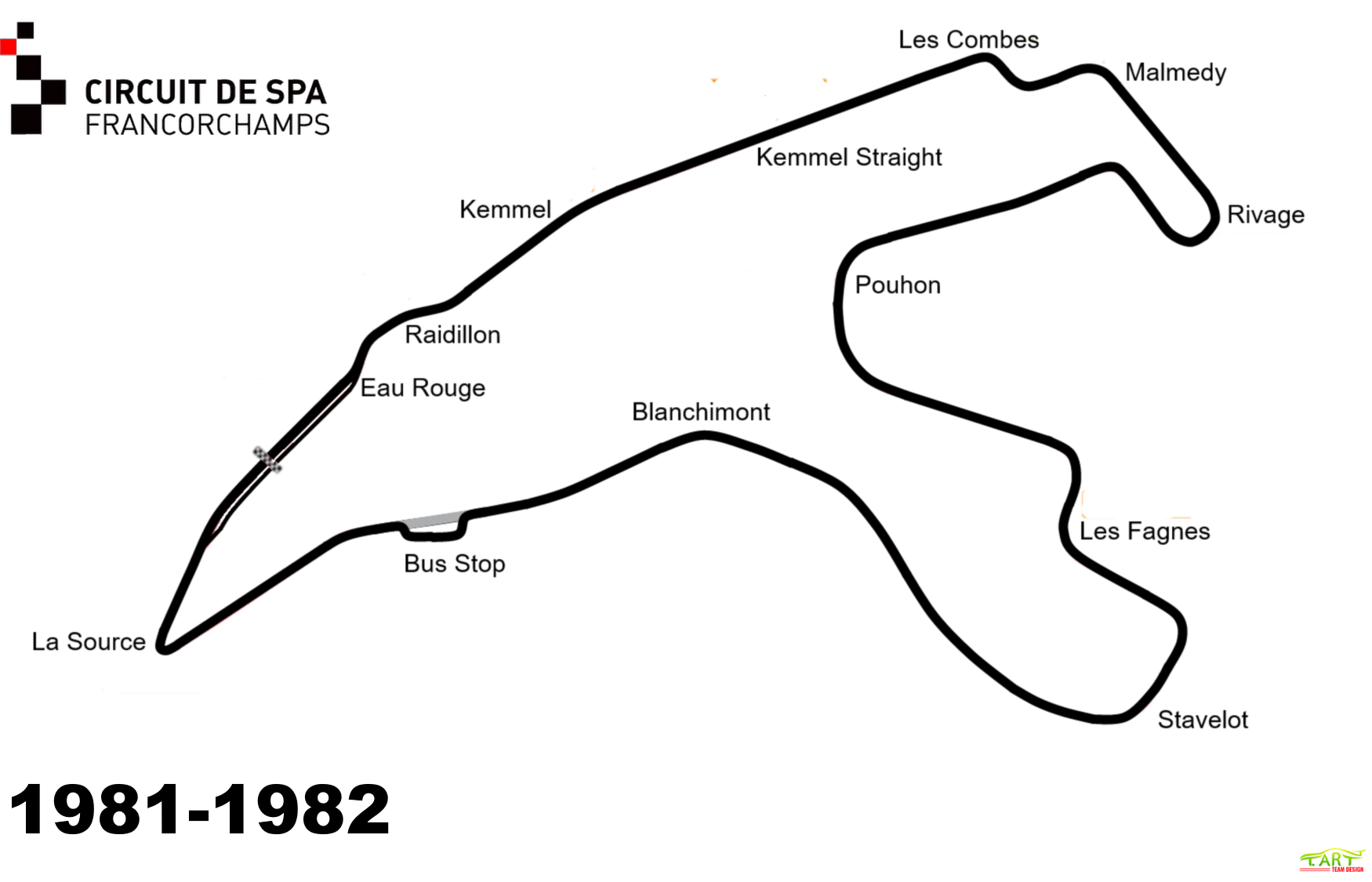
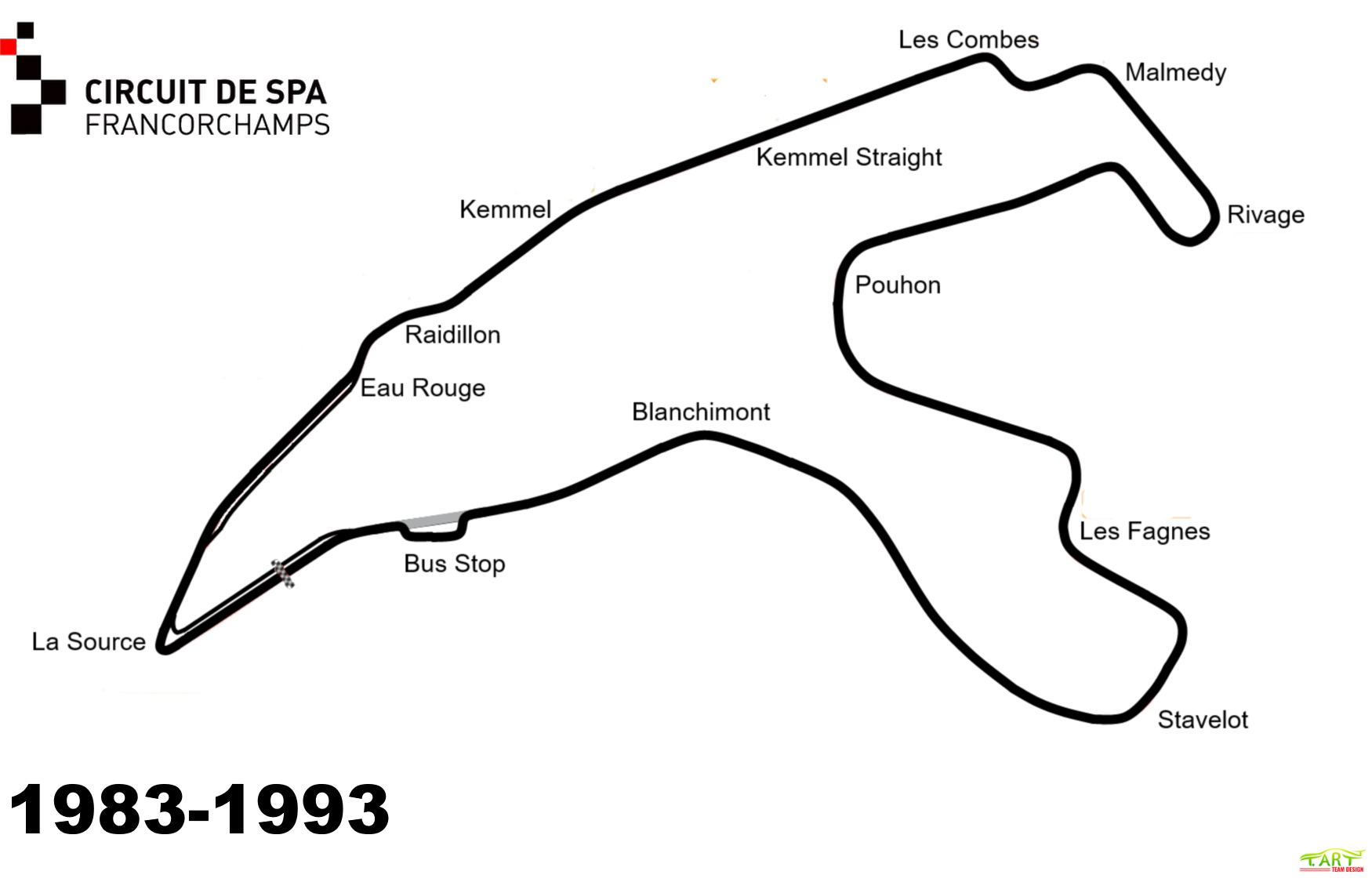
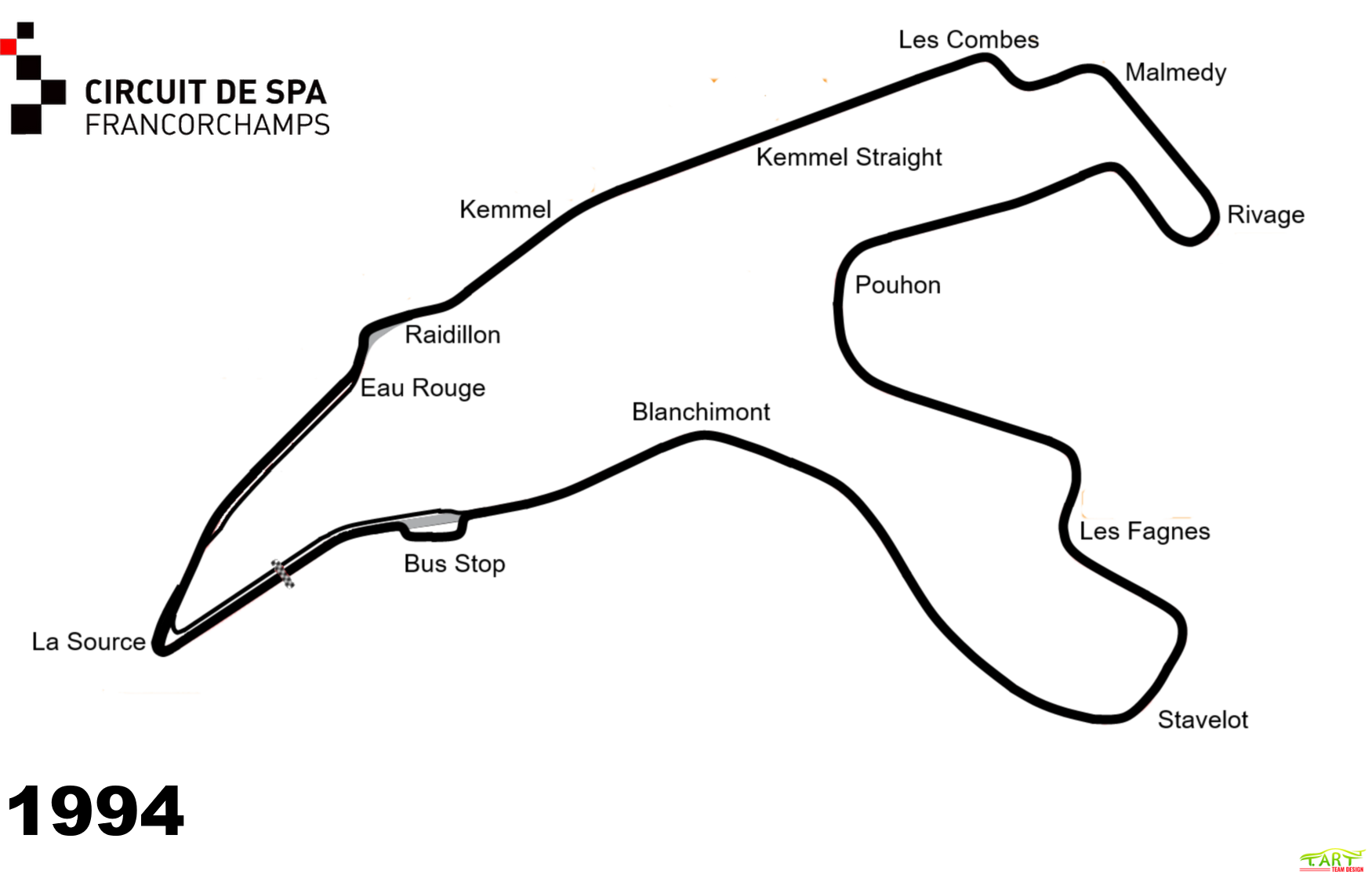
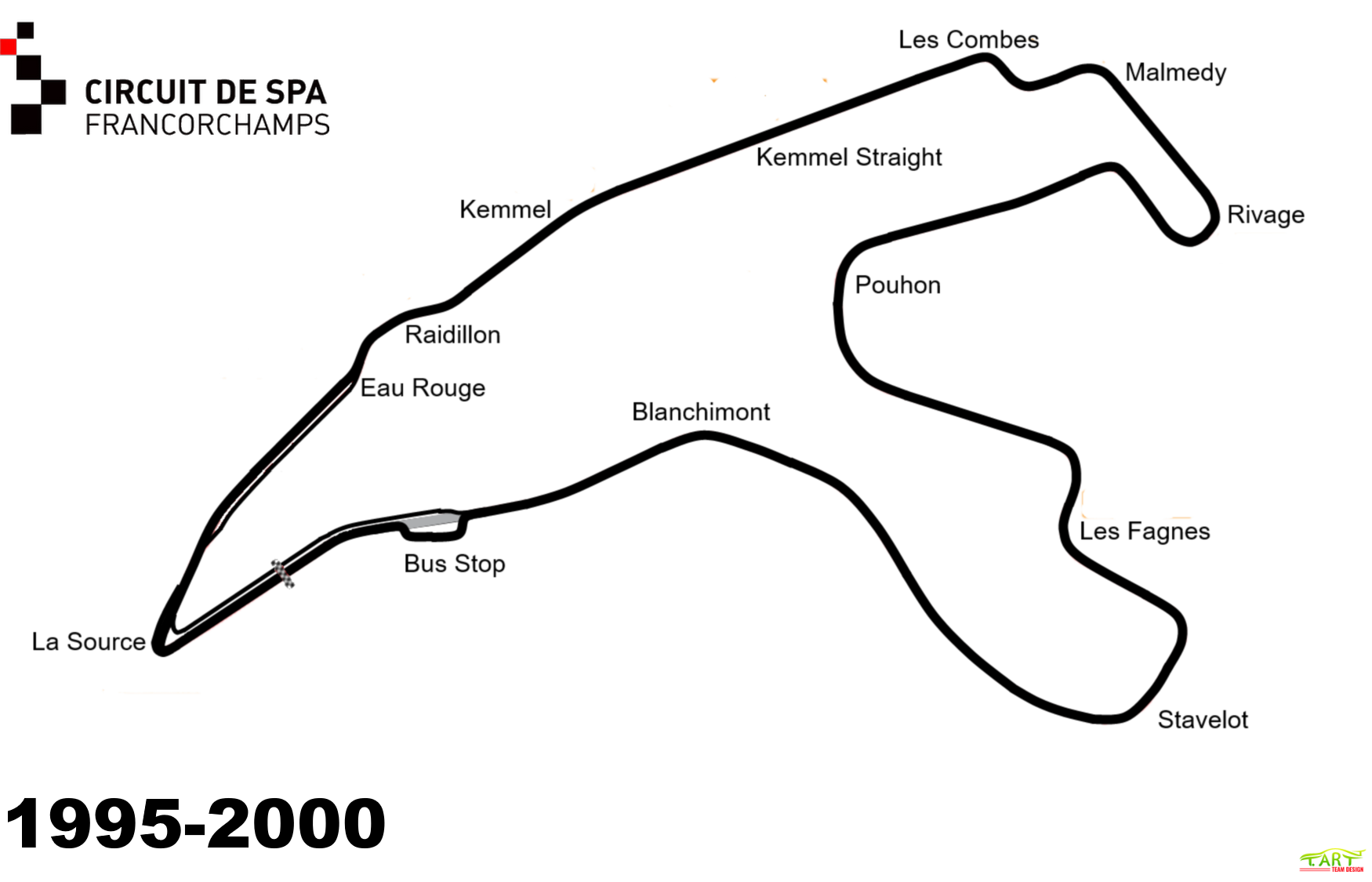



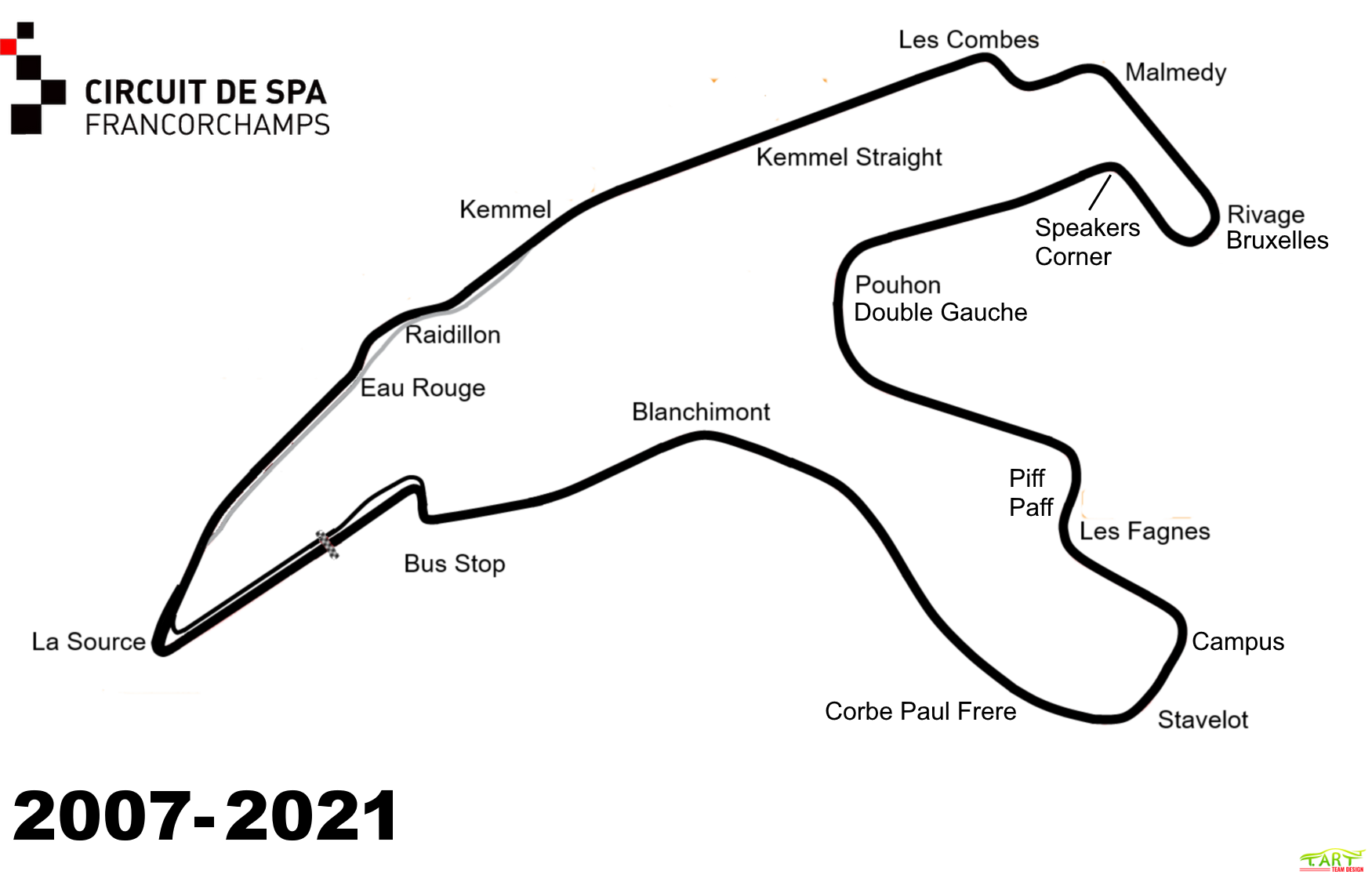

The Circuit de Spa-Francorchamps can be found near to the town of Francorchamps in eastern Belgium, close to the borders with Germany and the Netherlands. If you are flying to Spa, there are plenty of choices thanks to the circuit's central European location. The nearest international airport is actually over the border in the Netherlands; Maastricht Aachen Airport is approximately a 50 minutes drive from the circuit. An alternative airport with international flights can be found at Düsseldorf, Germany (a 90 minute drive away. The nearest major airport in Belgium is at Brussels Airport is an 85 mile drive (80 mins) away, but some international and domestic flights can also be found at South Charleroi Airport, which is also about an 80 minute drive.
By rail, you can travel on lines from Brussells, Liège and Charleroi to Verviers station, from where it is a 45 minute bus ride (route 94 or 395) to Francorchamps. Alternatively, buses are laid on from Liège during F1 weekends.
Getting to the circuit is easiest by road. The circuit is close to the A27/E32 highway and final directions will depend upon which car park your ticket has access to. The circuit website has comprehensive details and directions for spectators and competitors, so make sure you check this before heading off.

Under Construction.
Courtesy:Under Construction.
Courtesy: